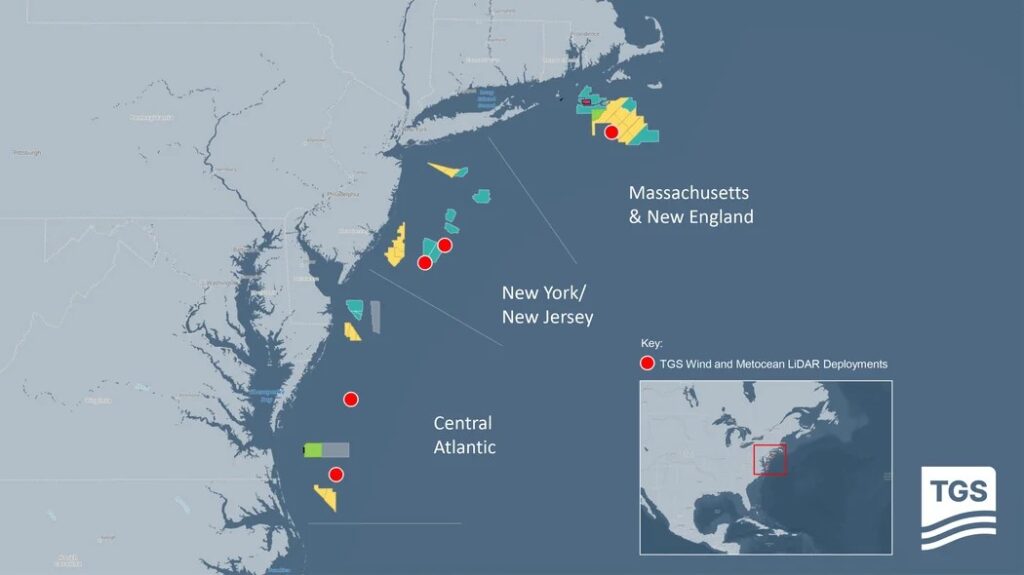General – Data Collection Campaign
TGS, a leading global provider of energy data and intelligence, has completed a pioneering mega-regional wind and metocean data collection campaign along the U.S. East Coast.

This is the largest of its kind in the region.
The campaign involved deploying and simultaneously operating five offshore LiDAR buoys covering nearly 600 kilometers from Massachusetts to the Virginia/North Carolina border. Data were collected from July 2022 through July 2024.
All campaigns were conducted under the TGS multi-client approach, allowing multiple customers to subscribe to the same floating LiDAR data. This model helps offshore wind stakeholders reduce costs and timescales associated with acquiring bankable wind and metocean data while minimizing energy uncertainty.
TGS used the collected data to bias-correct its high-resolution Numerical Weather Prediction (NWP) model simulations, creating the most extensive and validated high-resolution wind resource dataset along the U.S. East Coast.
Both the quality-controlled measurement data and the bias-corrected NWP model data are being utilized by developers to inform and refine their bidding strategies for BOEM’s upcoming Central Atlantic offshore wind lease auction. The measured LiDAR data reveals significantly different wind speeds compared to prior wind modeling studies, clearly demonstrating the value of direct measurements and the risks of relying on uncorrected model results for decision-making.
TGS’s operational experience led to superior data quality and operational excellence throughout the five deployments, all completed in partnership with EOLOS, with an average LiDAR data availability of 94% at a 140-meter measurement height. A comprehensive range of wind and metocean data was collected at each site, including wind speed and direction across a range of turbine hub heights, wave heights, and ocean current data across the full water column.
Additionally, four of the five buoys were equipped with in-air acoustic recording devices to monitor bird and bat activity, seabed-mounted sensors to measure additional metocean parameters, and whale and porpoise acoustic monitors to identify marine mammal vocalizations.
These measurements form a unique dataset, recorded across a vast stretch of the U.S. Coast, providing exclusive insights for mega modeling and extreme weather event studies, and wide-scale calibration of numerical models.
Carel Hooijkaas, EVP of New Energy Solutions at TGS, commented on the success of this groundbreaking program: “TGS is committed to advancing the global offshore wind industry, and the unparalleled scale of our offshore LiDAR measurements along the U.S. East Coast illustrates this dedication. These unique measurements empower developers to accurately assess the true wind resource variability across most of the U.S. East Coast offshore wind lease areas.”
Data were continuously acquired and quality-controlled throughout the deployment, with customers receiving daily access via the Wind AXIOM platform, TGS’s site evaluation and wind data analytics tool. The combined measurement campaign and its baseline model derivatives are designed with longevity in mind, providing a premier baseline dataset for wind resource analysis for future lease sales and project construction over the next 15 years.
With more active and planned floating LiDAR buoy deployments worldwide, TGS continues to support the industry by delivering reliable and cost-effective energy data solutions for offshore wind stakeholders.
